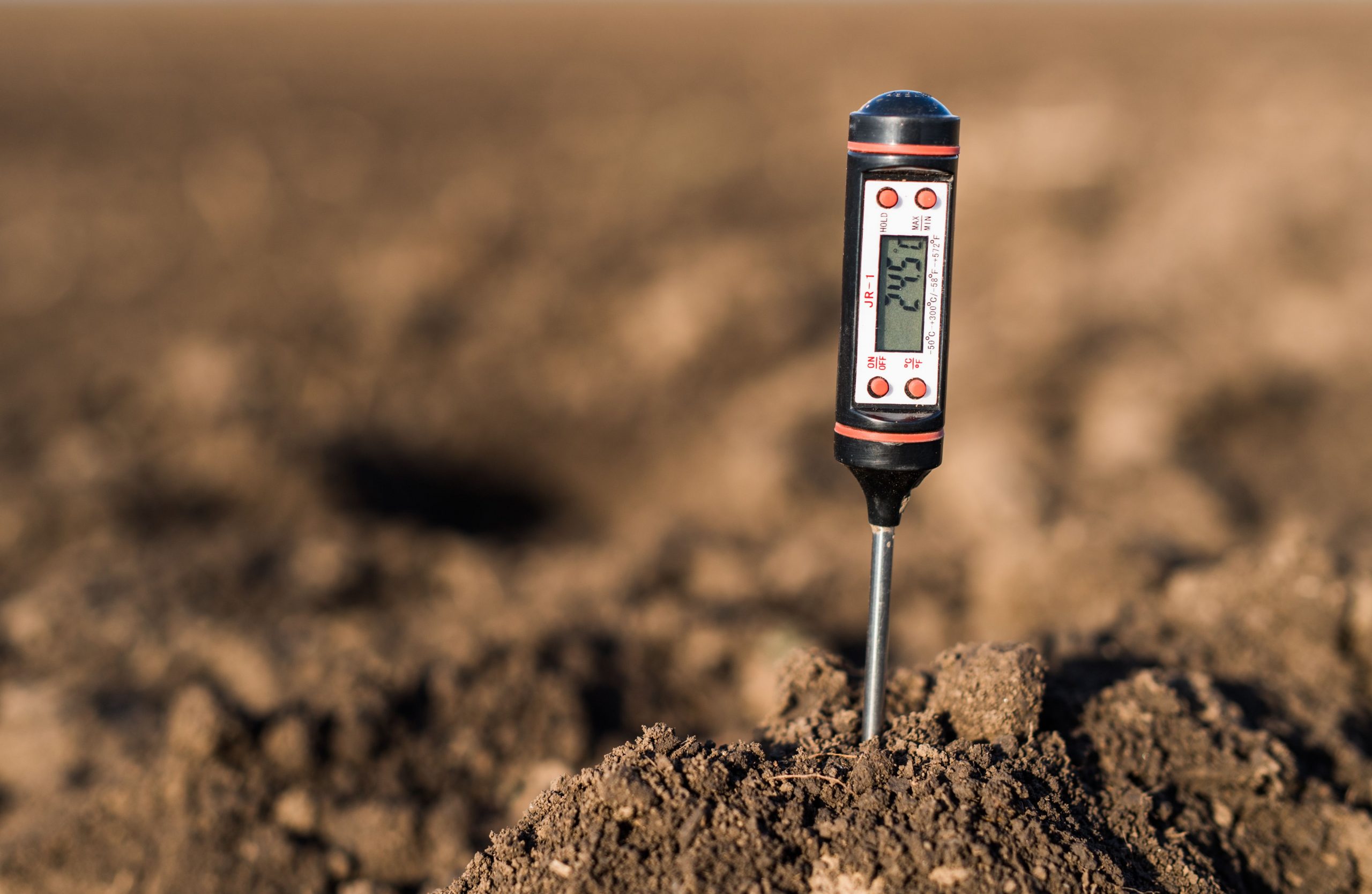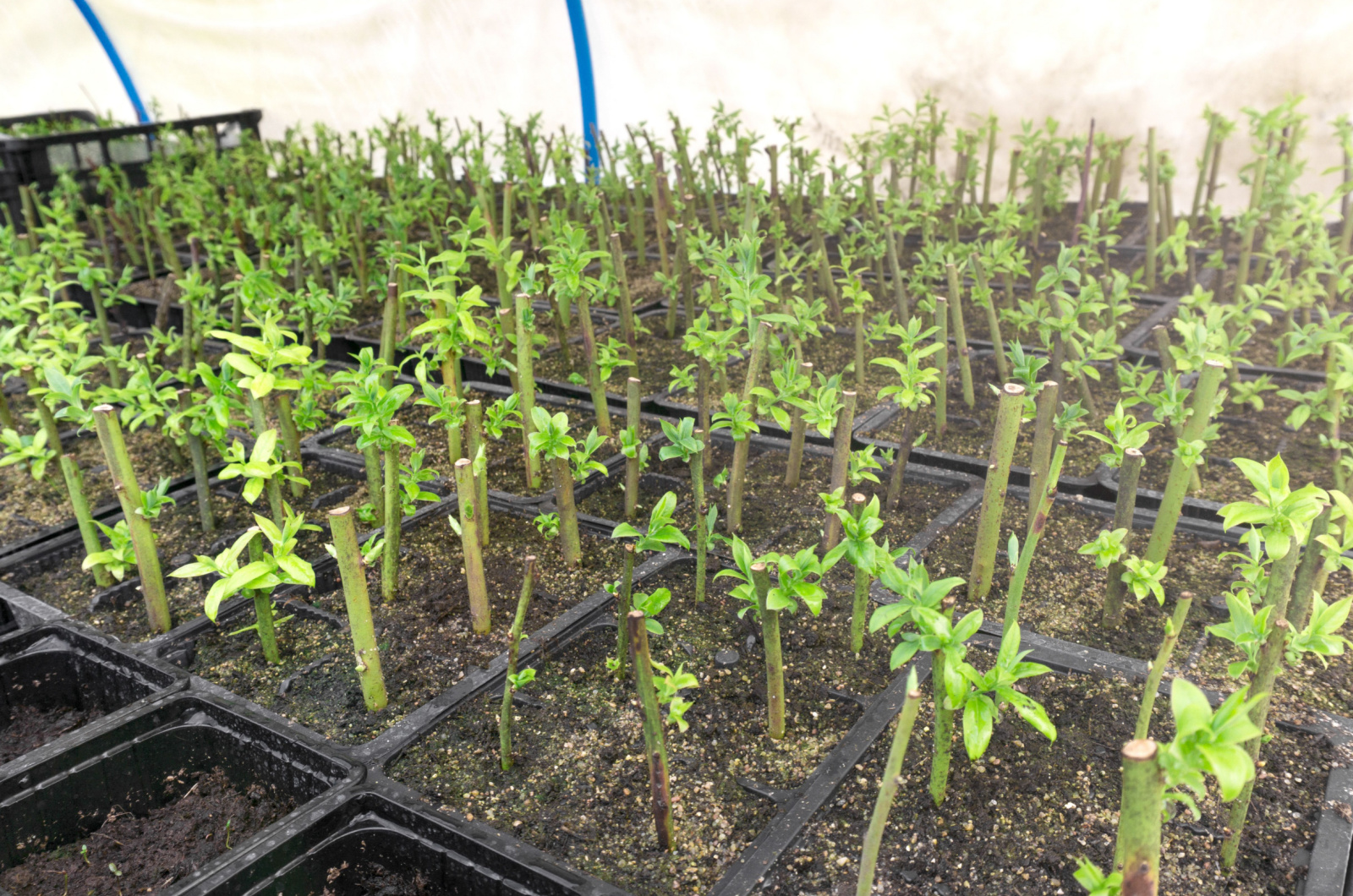Achieving the perfect pH for blueberry soil is the key to a thriving berry harvest. Blueberries grow well in soil that is slightly acidic, with pH between 4.0 to 5.5, but most soils have neutral pH levels of around 6.0 to 7.0.
If blueberries are grown in neutral soil, it might lead to several issues, including stunted growth, reduced berry production, yellow leaves, and other deficiencies.
So, before you plant your blueberries, it’s important to prepare the soil and make sure that you’ve got just the right soil pH levels!
Join us to understand the basics of soil pH, learn practical tips, and ensure your blueberry patch has the ideal conditions for a fruitful and delicious harvest in your own backyard.
1. Soil Test
Before you plant anything in your garden, you should do a soil test – it will let you know what kind of amendments to use and whether your soil needs to be adjusted. You can do this at home, but if you use a soil test from your local extension office, the results will be more reliable.
Related: 10 Tried-and-true Tips For Growing Blueberries In Your Garden
2. Plan Before Lowering pH
Most pH-lowering supplements take time to start working – elemental sulfur should be applied to the soil 6 months to one year before planting blueberries. Most gardeners apply these treatments in the fall and then plant blueberries in the spring.
3. Pick The Right Location
It’s already much easier to plant blueberries in a place with acidic soil instead of adjusting a new one. See if there’s any spot in your garden that would be ideal for blueberries. Full sun to partial shade and acidic sandy loam soil that are also well-draining are perfect for your berries.
You can also add companion plants nearby: Good Blueberry Companion Plants & Some Plants You Should Avoid
4. Use Raised Beds Or Containers
It may be easier to grow blueberries in raised beds or containers so you can get fresh soil and adjust it however you want. Choose containers that have a depth of 24 inches and a width of around 30 inches. Fill them with adequate potting mix specifically made for acid-loving plants.
5. You Can Add Elemental Sulfur
This is a powder substance that can be applied by hand or with a spreader. When preparing a new planting area, use a shovel or tiller to spread the sulfur and mix it into the top 6 to 8 inches of soil. If you’re already growing blueberries, cover the soil around the plants’ bases with sulfur.
Your soil type and current pH levels will determine the amount of sulfur you’ll need. For gardens with thick clay, use two pounds of sulfur for every 100 square feet of growing space to lower the pH by 1.0. For sandy gardens, use one pound of sulfur per 100 square feet of growing space.
6. Adjusting soil pH Takes Time
Sometimes a second treatment of sulfur is required if your soil pH is high. This means another application is required after six months. Don’t overdo it as too much sulfur can burn the plants and leach away in rain.
Related: Why & How To Add Coffee Grounds To Your Blueberry Bushes
7. You Can Also Add Organic Matter
Elemental sulfur is a type of soil amendment that can be washed away in the rain. Over time, the soil pH can rise and become alkaline again. When adding sulfur to the soil, include compost or other organic matter into the soil to slow down this process.
8. Check Soil pH Regularly
After adding all sorts of amendments to the soil, you should keep track of everything by regularly checking the pH levels. Test the soil around your blueberries to see if you need to add more sulfur.
9. Acid-loving Plants Will Benefit From Fertilizer
If you want to have more berries, you’ll need to apply fertilizer. Opt for those designed specifically for acid-loving plants – they will lower the pH and at the same time give your plants nutrients they need.
Related: From Tiny Berries to Bucketfuls: Fertilizing Blueberry Bushes Made Easy




